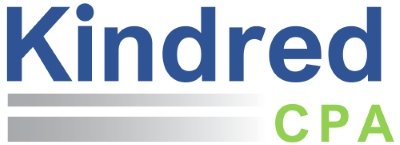We don’t usually comment on pending legislation because of the uncertainty of its passage. However, a tax bill is being fast-tracked through Congress that includes…
 The first of the long-awaited guidance on PPP loan forgiveness has now been released by the Small Business Administration (SBA). The PPP Forgiveness Application provides step by step instructions to walk you through the process. There aren’t any surprises in this document, but there is some welcome clarification:
The first of the long-awaited guidance on PPP loan forgiveness has now been released by the Small Business Administration (SBA). The PPP Forgiveness Application provides step by step instructions to walk you through the process. There aren’t any surprises in this document, but there is some welcome clarification:
Payroll Period
One of the most frequent questions we’ve received is whether a client’s pay dates needed to be changed in order to have all payroll costs considered within the 8-week forgiveness period. The new guidance clarifies that borrowers with a bi-weekly (or more frequent) pay period can use either the 8 week period beginning with the first date loan proceeds are received (known as the “Covered Period”) or use an “Alternative Payroll Covered Period” beginning with the first day of the first pay period following the date on which PPP proceeds were received. If you use the Alternative Payroll Covered Period, you must use it for all PPP calculations that make reference to “the Covered Period or the Alternative Payroll Covered Period”.
Full Time Equivalent (FTE) Calculation
To calculate FTEs, enter the average number of hours paid per week for each employee, divide by 40, and round to the nearest tenth. The maximum you can count for any one employee is 1.0 (i.e., an employee who normally works 60 hours/week is not worth 1.5). Alternatively, you can assign 1.0 to each employee who works 40 or more hours each week and .5 for employees who work fewer than 40 hours.
The FTE number compares the average weekly number of FTE employees during the Covered Period or Alternative Payroll Covered Period to that of your “chosen reference period”. You may elect one of three options for your chosen reference period:
- February 15, 2019 to June 30, 2019
- January 1, 2020 to February 29, 2020
- In the case of seasonal employers, either #1 or #2 above or a consecutive twelve-week period between May 1, 2019 and September 15, 2019
Use the same FTE calculation method to determine FTEs for your chosen reference period. In order to receive loan forgiveness, both the average FTE during the Covered Period or the Alternative Payroll Covered Period and the average FTEs during your chosen reference period need to be the same . . . with a few exceptions:
- If you made a good faith, written offer to rehire an employee but the employee rejected the offer;
- If an employee was fired for cause, voluntarily resigned, or voluntarily requested and received a reduction of their hours;
- If you reduced your FTE count between February 15 and April 26, 2020 but subsequently restored your FTE employee levels not later than June 30, 2020 back to the levels in the pay period including February 15, 2020. This is called the “FTE Reduction Safe Harbor.”
- If your business was closed or you had to reduce your workforce due to stay at home orders, this applies to you. If you restore your FTE levels back to the same number as your chosen reference period, this safe harbor provides you a way to satisfy the FTE requirement.
Wage Reduction
In order to receive loan forgiveness, wage levels cannot be reduced more than 25% during the 8-week covered period. If any employee’s salary or hourly wage was reduced by more than 25% during the 8 weeks as compared to the period of January 1 – March 31, 2020, you must complete a worksheet for each of those employees.
And remember that owner compensation is limited to the lower of $15,385 (the 8-week equivalent of $100,000 per year) or an 8-week equivalent of the owner’s 2019 compensation.
Documentation You’ll Need to Gather
Gathering the loan forgiveness documentation will take you some time, so start gathering this information now. You’ll need to provide:
- Independent confirmation of payroll costs such as bank account statements, payroll tax filings, health insurance and retirement plan contribution receipts, cancelled checks or account statements
- Independent confirmation of FTE counts, such as payroll tax filings
- Documentation of non-payroll costs including:
- Business mortgage interest payments – lender amortization schedule along with receipts, cancelled checks or account statements verifying payments
- Business rent or lease payments – copy of lease agreement along with receipts, cancelled checks or account statements verifying payments
- Business utility payments – copy of invoices beginning February 2020 through the Covered Period along with receipts, cancelled checks or account statements verifying payments
You’ll also need to gather – but not submit – the following:
- A list of all employees who worked for you during the Covered Period
- Employees who worked for you who earned an annualized rate of more than $100,000 in 2019
- Documentation of any employee job offers and refusals, firings for cause, voluntary resignations, and written requests by any employee for reductions in their work schedules
- Documentation of your efforts to restore your FTE counts under the FTE Reduction Safe Harbor
All of the above documentation should be retained for 6 years after the date the loan is forgiven (or repaid in full).
This Loan Forgiveness Application and guidance is welcome, as it answers a lot of questions. If you need assistance in gathering the required information for your organization, please let us know.



